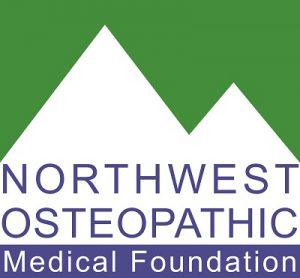
This week, we are going to talk about adrenaline. Why do we have it, and why having too much of it can cause a problem. Well, several problems, actually.
Last week we had a little event at the Tate Estate. My cat stood over what appeared to be a dead mouse. He was on his back, feet curled into his chest, limp. Poor little fella. Dead as a doorknob, he was, and yet I screamed like I was being hacked to death in a horror flick. My poor husband could be heard yelling, “I’M COMING!!!” from across the house. I’m sure he thought I was being attacked by some unknown assailant. As his footsteps thundered through the house, I called out, “I’m FINE…it’s just…(as he entered the bedroom)…a mouse”.

A look of relief washed over his face, and he went to get a paper towel to gently pick the little fella up and dispose of his sad little body…and I mean little. An inch if he was lucky. And then, it happened. He wasn’t dead. He was a big faker. He jumped up and ran for the hills and my heart jumped up and into my throat. Whoah Nelly…now we have a situation.

The mouse ran underneath a bookcase and there he stayed, for hours. My roommate and her son tried to get him out. My husband tried. One of two cats tried while the other looked on in bored amusement. Nothing. He wasn’t budging. Would you?
Night came, and my adrenaline was pumping. Did I just feel something fuzzy on my foot?! Oh..it was the dogs’ toy. Ok…ok…I can do this…just close your eyes Linda an…WAIT!!! What was THAT? Is it crawling along the floor under the BED?! No? Oh. Sorry honey…go back to sleep (and he DID).
I lay there, angry that my husband could just go to sleep like that. Are you seriously sleeping right now? UGH! Did he not understand there was VERMIN in the BEDROOM?
Around 3 am I got up having had little to no sleep, and went into the bathroom where we have a cat dish with dry food in it…and there sat one of our cats, staring at the food bowl. Oh no…is it…if I look will it be… I got up the guts to look into the bowl, but there was nothing there. I noticed the bowl had been moved a bit, so I picked it up to put it back. OH MY STARS AND GARTERS, there it WAS!

I froze. It froze. I weakly called out to my husband…”David….” Thankfully he was also awake and came to my rescue, box in hand. Martin the Mouse was delivered safely outside and no mice were hurt in the writing of this blog. Yes, I named him in an effort to normalize the event. I’m still traumatized and last night when my cat was pawing at my quilt I just knew another one was not only in the house but in my bed. My heart was pounding until I realized it was just his toy…no mouse.
That response…the one about “just knowing” another one was in my bed, followed by a pounding heart? That was a trauma response. It’s what happens after we’ve been exposed to prolonged adrenaline rushes. Our body has a hard time calming back down and realizing we are safe. All joking aside, it’s a serious issue for those who experience it. PTSD is no laughing matter, and while I used the mouse as an example that was easy to understand, my experience will go away in a few days. Someone who has experienced real trauma…not so much.
So what is adrenaline?
Adrenaline is a hormone secreted by the adrenal glands, especially in conditions of stress, increasing rates of blood circulation, breathing, and carbohydrate metabolism, and preparing muscles for exertion. It’s a great thing if we are in harm’s way and need some extra UMPH to run away. It’s what helps us lift a car off a person who’s pinned. After the event, we wonder, “how did I do that?”. Adrenaline is how you did that.

You may ask what happens to our body when we experience adrenaline rushes over and over, or have prolonged rushes, like when you are in a violent relationship and scared for your life day in and day out? Great question. Let’s find the answer.
The Mayo Clinic tells us what happens and it’s not pretty.
“The long-term activation of the stress-response system and the overexposure to cortisol and other stress hormones that follow can disrupt almost all your body’s processes. This puts you at increased risk of many health problems, including:
- Anxiety
- Depression
- Digestive problems
- Headaches
- Heart disease
- Sleep problems
- Weight gain
- Memory and concentration impairment
That’s why it’s so important to learn healthy ways to cope with your life stressors.“
They go on to help us understand how to manage our stress:
“You can learn to identify what stresses you and how to take care of yourself physically and emotionally in the face of stressful situations.
Stress management strategies include:
- Eating a healthy diet and getting regular exercise and plenty of sleep
- Practicing relaxation techniques such as trying yoga, practicing deep breathing, getting a massage or learning to meditate
- Taking time for hobbies, such as reading a book or listening to music
- Fostering healthy friendships
- Having a sense of humor
- Volunteering in your community
- Seeking professional counseling when needed
The reward for learning to manage stress is peace of mind and perhaps a longer, healthier life”.
By the way…
Remember when I said the little mouse, Marvin, “played dead“? There’s a name for that in the mouse world: tonic immobility. This happens when pressure is applied to a rodent’s upper back, typically while lying belly up on the ground, which causes “freezing” or “playing dead.”
This “freeze” is related to the “fight or flight,” reflex, (sound familiar?) which is a human or animal’s reaction to danger. The animal will either fight the predator, run from it, or hold completely still, depending on the circumstances, much like us.
Tonic immobility is a fear reaction, possibly developed to make predators think the animal is dead. Animals do not consciously work this out themselves, rather, a combination of position and adrenaline freezes the animal in place.
So there you have it…I hope I never have to deal with a mouse in the house again, but something tells me that’s a pipe dream. If it does happen, at least I’ll be more aware of my response to it, and how that response is potentially affecting my health.

The Northwest Osteopathic Medical Foundation is a public charity committed to Advancing Wellness through the Osteopathic Approach. As a charity, we do not represent any medical school, medical association, medical practice, or individual physician.
This blog should not be considered to be medical advice. Your personal health is best discussed one-on-one with your personal physician. Rather, this blog is intended to highlight the distinctive philosophy and practice of osteopathic medicine as expressed by the author and does not necessarily represent the opinion of the Northwest Osteopathic Medical Foundation, or other Osteopathic physicians. The information and opinions are solely those of the author. For more information, go to www.nwosteo.org.
Editors note: This blog is not a replacement for sound medical advice, and many diseases, disorders, and syndromes have symptoms that overlap. Only a qualified medical professional can diagnose you. That said, if you think this blog may be helpful to others, please hit the Facebook Icon and share it on your personal pages. Thank you for reading us, we really do appreciate you!


